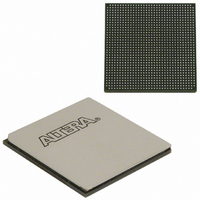EP2SGX90EF1152C4N Altera, EP2SGX90EF1152C4N Datasheet - Page 58

EP2SGX90EF1152C4N
Manufacturer Part Number
EP2SGX90EF1152C4N
Description
IC STRATIX II GX 90K 1152-FBGA
Manufacturer
Altera
Series
Stratix® II GXr
Datasheet
1.EP2SGX30DF780C5.pdf
(316 pages)
Specifications of EP2SGX90EF1152C4N
Number Of Logic Elements/cells
90960
Number Of Labs/clbs
4548
Total Ram Bits
4520448
Number Of I /o
558
Voltage - Supply
1.15 V ~ 1.25 V
Mounting Type
Surface Mount
Operating Temperature
0°C ~ 70°C
Package / Case
1152-FBGA
Family Name
Stratix II GX
Number Of Logic Blocks/elements
90960
# I/os (max)
558
Frequency (max)
732.1MHz
Process Technology
SRAM
Operating Supply Voltage (typ)
1.2V
Logic Cells
90960
Ram Bits
4520448
Operating Supply Voltage (min)
1.15V
Operating Supply Voltage (max)
1.25V
Operating Temp Range
0C to 85C
Operating Temperature Classification
Commercial
Mounting
Surface Mount
Pin Count
1152
Package Type
FC-FBGA
For Use With
544-1725 - PCIE KIT W/S II GX EP2SGX90N544-1724 - SI KIT W/SII GX EP2SGX90N544-1702 - VIDEO KIT W/SII GX EP2SGX90N
Lead Free Status / RoHS Status
Lead free / RoHS Compliant
Number Of Gates
-
Lead Free Status / Rohs Status
Compliant
Other names
544-1767
EP2SGX90EF35C4NES
EP2SGX90EF35C4NES
Available stocks
Company
Part Number
Manufacturer
Quantity
Price
Company:
Part Number:
EP2SGX90EF1152C4N
Manufacturer:
ALTERA
Quantity:
648
- Current page: 58 of 316
- Download datasheet (2Mb)
Adaptive Logic Modules
2–50
Stratix II GX Device Handbook, Volume 1
f
One ALM contains two programmable registers. Each register has data,
clock, clock enable, synchronous and asynchronous clear, asynchronous
load data, and synchronous and asynchronous load/preset inputs.
Global signals, general-purpose I/O pins, or any internal logic can drive
the register’s clock and clear control signals. Either general-purpose I/O
pins or internal logic can drive the clock enable, preset, asynchronous
load, and asynchronous load data. The asynchronous load data input
comes from the datae or dataf input of the ALM, which are the same
inputs that can be used for register packing. For combinational functions,
the register is bypassed and the output of the LUT drives directly to the
outputs of the ALM.
Each ALM has two sets of outputs that drive the local, row, and column
routing resources. The LUT, adder, or register output can drive these
output drivers independently (see
drivers, two ALM outputs can drive column, row, or direct link routing
connections, and one of these ALM outputs can also drive local
interconnect resources. This allows the LUT or adder to drive one output
while the register drives another output. This feature, called register
packing, improves device utilization because the device can use the
register and the combinational logic for unrelated functions. Another
special packing mode allows the register output to feed back into the LUT
of the same ALM so that the register is packed with its own fan-out LUT.
This feature provides another mechanism for improved fitting. The ALM
can also drive out registered and unregistered versions of the LUT or
adder output.
See the
more information on the efficiencies of the Stratix II GX ALM and
comparisons with previous architectures.
ALM Operating Modes
The Stratix II GX ALM can operate in one of the following modes:
■
■
■
■
Each mode uses ALM resources differently. Each mode has 11 available
inputs to the ALM (see
local interconnect; carry-in from the previous ALM or LAB; the shared
arithmetic chain connection from the previous ALM or LAB; and the
register chain connection—are directed to different destinations to
implement the desired logic function. LAB-wide signals provide clock,
Normal mode
Extended LUT mode
Arithmetic mode
Shared arithmetic mode
Stratix II Performance and Logic Efficiency Analysis White Paper
Figure
2–35)—the eight data inputs from the LAB
Figure
2–36). For each set of output
Altera Corporation
October 2007
for
Related parts for EP2SGX90EF1152C4N
Image
Part Number
Description
Manufacturer
Datasheet
Request
R

Part Number:
Description:
CYCLONE II STARTER KIT EP2C20N
Manufacturer:
Altera
Datasheet:

Part Number:
Description:
CPLD, EP610 Family, ECMOS Process, 300 Gates, 16 Macro Cells, 16 Reg., 16 User I/Os, 5V Supply, 35 Speed Grade, 24DIP
Manufacturer:
Altera Corporation
Datasheet:

Part Number:
Description:
CPLD, EP610 Family, ECMOS Process, 300 Gates, 16 Macro Cells, 16 Reg., 16 User I/Os, 5V Supply, 15 Speed Grade, 24DIP
Manufacturer:
Altera Corporation
Datasheet:

Part Number:
Description:
Manufacturer:
Altera Corporation
Datasheet:

Part Number:
Description:
CPLD, EP610 Family, ECMOS Process, 300 Gates, 16 Macro Cells, 16 Reg., 16 User I/Os, 5V Supply, 30 Speed Grade, 24DIP
Manufacturer:
Altera Corporation
Datasheet:

Part Number:
Description:
High-performance, low-power erasable programmable logic devices with 8 macrocells, 10ns
Manufacturer:
Altera Corporation
Datasheet:

Part Number:
Description:
High-performance, low-power erasable programmable logic devices with 8 macrocells, 7ns
Manufacturer:
Altera Corporation
Datasheet:

Part Number:
Description:
Classic EPLD
Manufacturer:
Altera Corporation
Datasheet:

Part Number:
Description:
High-performance, low-power erasable programmable logic devices with 8 macrocells, 10ns
Manufacturer:
Altera Corporation
Datasheet:

Part Number:
Description:
Manufacturer:
Altera Corporation
Datasheet:

Part Number:
Description:
Manufacturer:
Altera Corporation
Datasheet:

Part Number:
Description:
Manufacturer:
Altera Corporation
Datasheet:

Part Number:
Description:
CPLD, EP610 Family, ECMOS Process, 300 Gates, 16 Macro Cells, 16 Reg., 16 User I/Os, 5V Supply, 25 Speed Grade, 24DIP
Manufacturer:
Altera Corporation
Datasheet:












